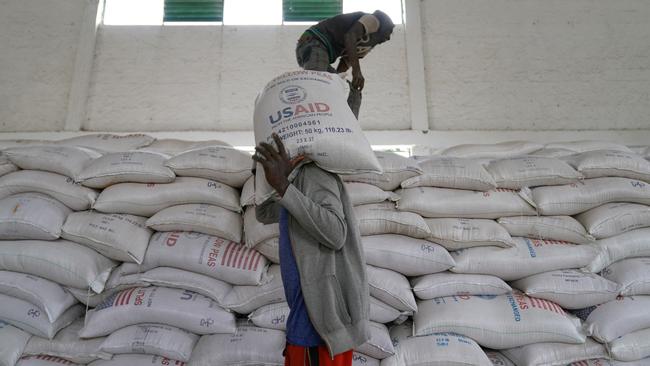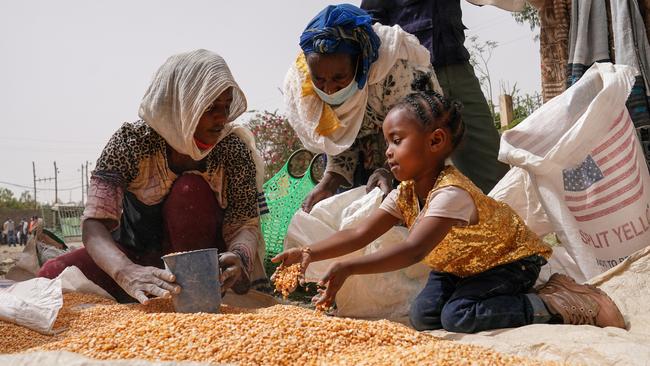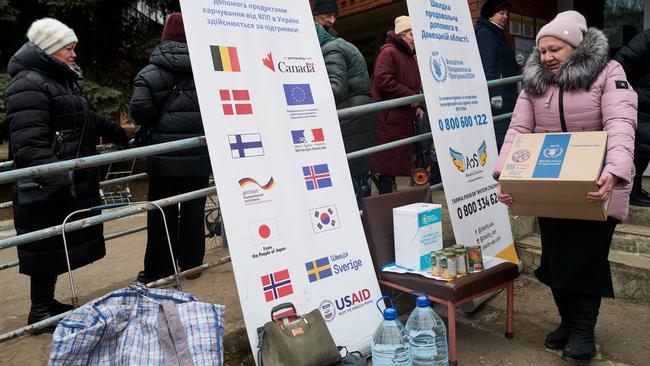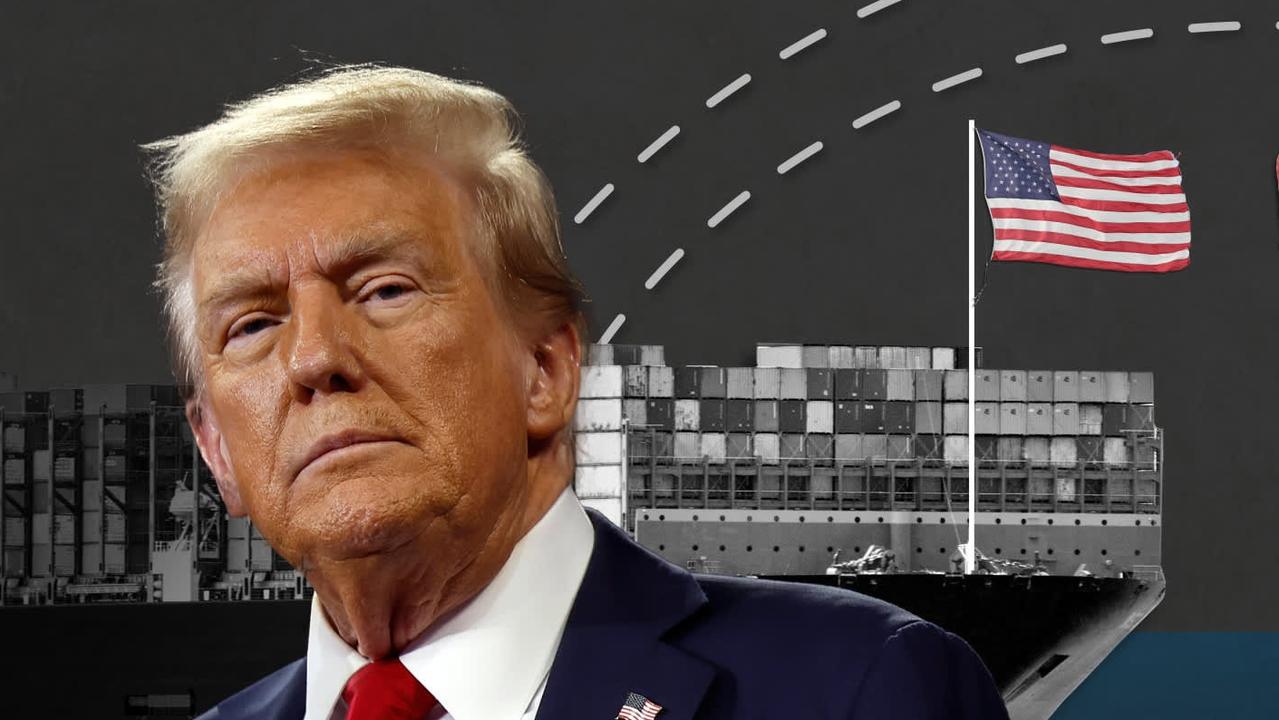How much the US spent on foreign aid and where it went
The Trump administration has largely dismantled USAID and brought American assistance to a near-halt.

The US was the world’s largest funder of foreign aid for decades – propping up education, health services and human rights in developing countries, and supporting the militaries of strategic allies.
Programs often associated with foreign aid, such as humanitarian assistance, made up a large slice of the total, but significant funding also went to strengthening militaries in allied nations and helping governments phase out fossil fuels or contain the production of opioids that could end up in the US.
Donald Trump last month ordered a freeze on much of that spending for 90 days. Secretary of State Marco Rubio then signed a waiver for lifesaving humanitarian assistance supposed to allow projects such as field hospitals in war zones to resume.
The US spent nearly $US65bn ($103.6bn) on foreign aid in 2023, the most recent year for which internationally comparable data is available. In dollar terms, that was more than any other rich country in the OECD.
But as a percentage of its economy, the US lagged behind countries such as Japan, Britain and France. USAID (US Agency for International Development), established in 1961 by president John F. Kennedy, was responsible for around two-thirds of US foreign assistance.
The administration’s move to dismantle USAID has left big questions over who will oversee whatever programs are allowed to resume after the 90-day freeze.
Much of the remaining foreign aid came from the State Department, including sanitation and clinics in refugee camps and military assistance.

The Health and Human Services Department monitored and helped contain dangerous diseases such as Ebola abroad. The US Treasury funded contributions to international financial institutions such as the World Bank and provided technical assistance to finance ministries in developing countries to prevent debt crises.
A large proportion of US aid ended up in overseas communities via the UN and other multilateral agencies, as well as American and international non-profits that give grants to smaller, local organisations.
Low-income countries suffering large humanitarian crises due to conflicts, such as Sudan, Ethiopia or the Democratic Republic of Congo, have been key targets for American aid.
But need wasn’t the only determining factor for how much US aid a country received. Allocation decisions were often tied to a nation’s importance to American national security and global priorities.
Until Russia’s full-scale invasion of Ukraine, Israel, a high-income country, was the top recipient of US assistance for many years and remained in the No.2 spot in the 2024 fiscal year. Jordan and Egypt, two other key allies in the Middle East, were also among the top five overall recipients.
Since 2022, Ukraine had been getting far more US aid than any other country, even when military assistance is excluded.
Africa’s share of total US foreign aid, and the proportion of aid that went to low-income countries, meanwhile, declined over the past decade.

Some of the clearest evidence of the impact of American aid comes from the President’s Emergency Plan for AIDS Relief, or Pepfar. Since it was created in 2003 by George W. Bush, Pepfar has been credited with saving 26 million lives, mostly in African countries. New transmissions have fallen and, thanks to US-funded antiretroviral drugs, HIV is no longer a death sentence but a chronic disease that can be managed.
The Joint United Nations Program on HIV/AIDS, or UNAIDS, projects that by the end of the decade Pepfar would prevent an extra 5.2 million AIDS-related deaths and 6.4 million new infections.
If Pepfar were discontinued, 460,000 more children would die of HIV-related causes by 2030 and 2.8 million more children will be orphaned by AIDS, according to another model.
US funding for vaccines, nutrition and malaria prevention has contributed to a sharp fall in deaths among children under five in developing nations. A 2022 study, published in the journal Population Health Metrics, found that countries receiving above-average funding from USAID saw under-five mortality reduced by 29 deaths per 1000 live births.
In other areas, US assistance has been less successful.
USAID and the State Department spent tens of millions of dollars in recent years training local militaries and supporting good governance in Niger, Mali and Burkina Faso – three countries in Africa’s Sahel region where coups have ousted elected leaders and the new ruling juntas kicked out US troops to forge closer ties with Russia.
The Wall Street Journal


